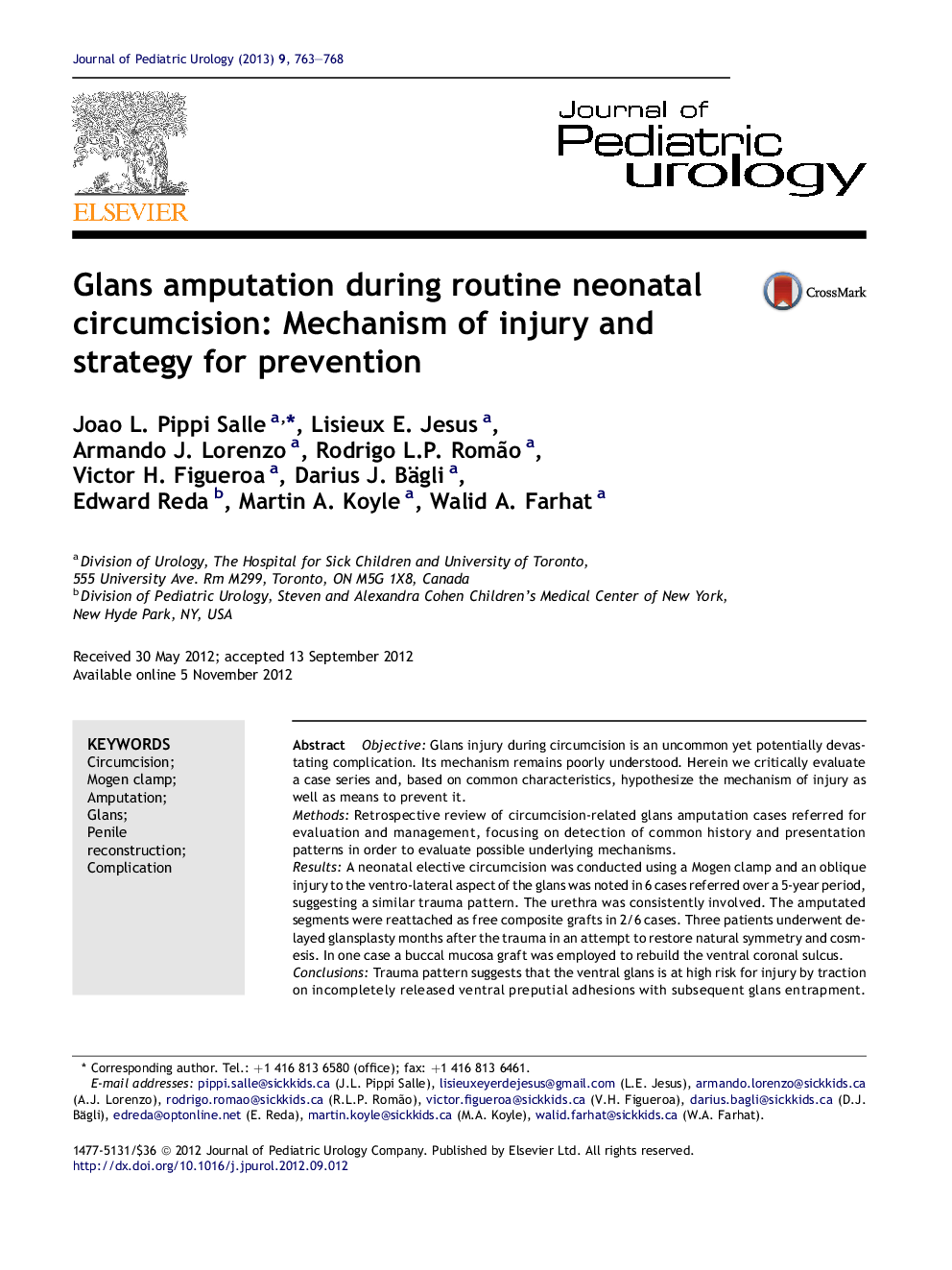| Article ID | Journal | Published Year | Pages | File Type |
|---|---|---|---|---|
| 6218499 | Journal of Pediatric Urology | 2013 | 6 Pages |
ObjectiveGlans injury during circumcision is an uncommon yet potentially devastating complication. Its mechanism remains poorly understood. Herein we critically evaluate a case series and, based on common characteristics, hypothesize the mechanism of injury as well as means to prevent it.MethodsRetrospective review of circumcision-related glans amputation cases referred for evaluation and management, focusing on detection of common history and presentation patterns in order to evaluate possible underlying mechanisms.ResultsA neonatal elective circumcision was conducted using a Mogen clamp and an oblique injury to the ventro-lateral aspect of the glans was noted in 6 cases referred over a 5-year period, suggesting a similar trauma pattern. The urethra was consistently involved. The amputated segments were reattached as free composite grafts in 2/6 cases. Three patients underwent delayed glansplasty months after the trauma in an attempt to restore natural symmetry and cosmesis. In one case a buccal mucosa graft was employed to rebuild the ventral coronal sulcus.ConclusionsTrauma pattern suggests that the ventral glans is at high risk for injury by traction on incompletely released ventral preputial adhesions with subsequent glans entrapment. Practitioners performing neonatal circumcisions, particularly with a Mogen clamp, should exercise adequate release of ventral adhesions to prevent this complication.
